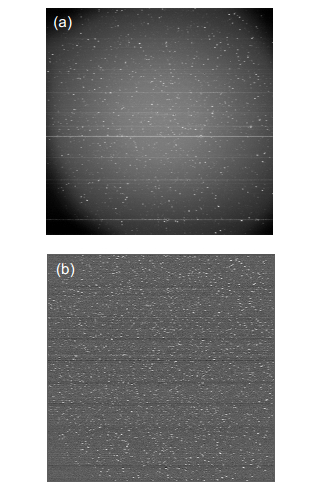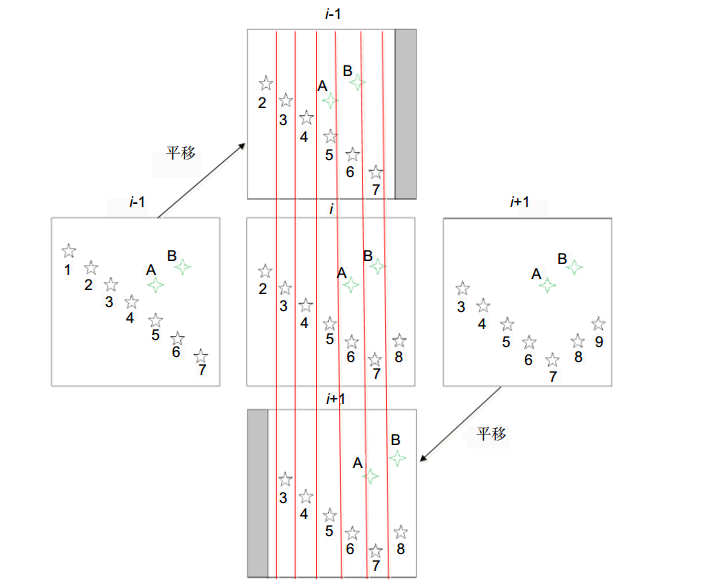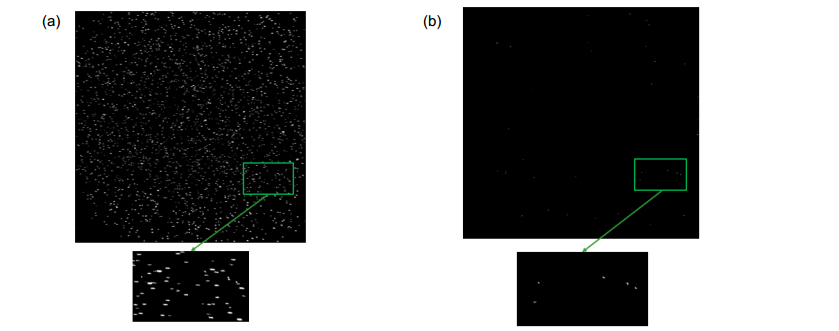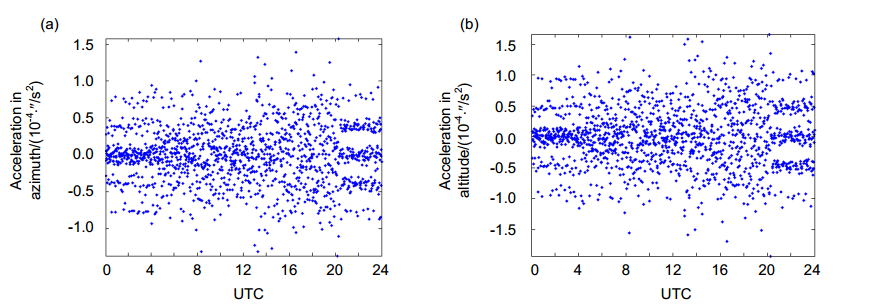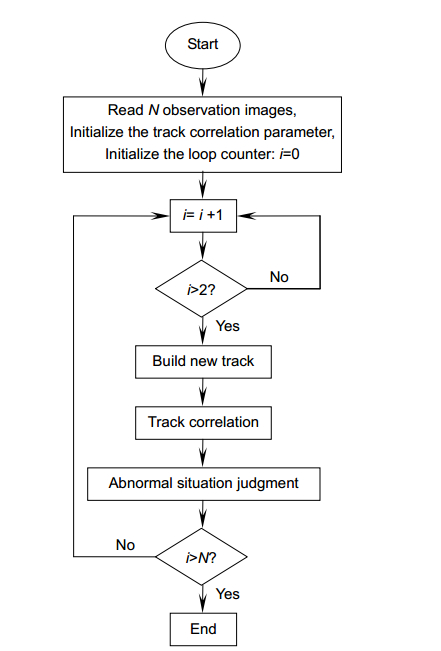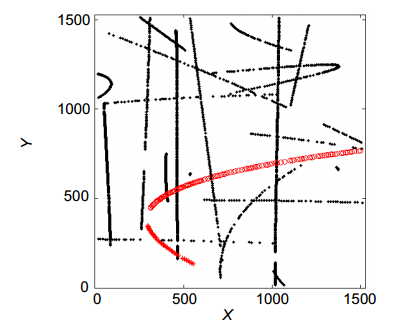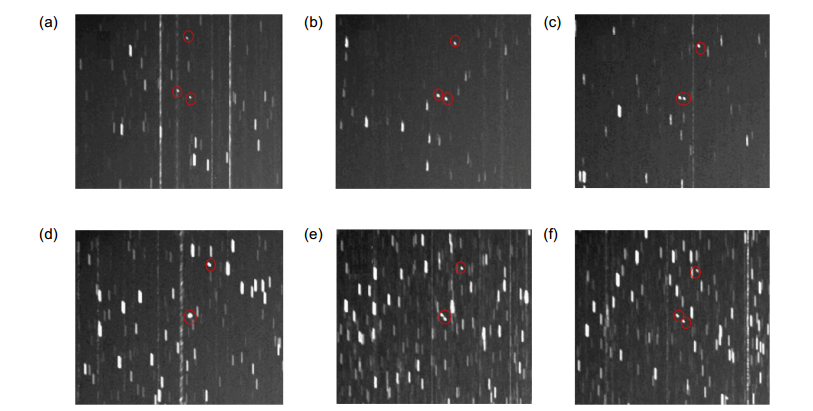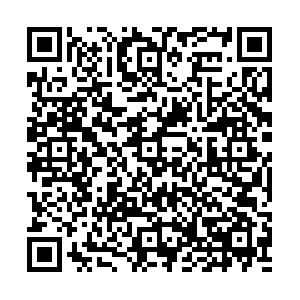A method of GEO targets recognition in wide-field opto-electronic telescope observation
-
摘要
为开展地球同步轨道(GEO)空间目标监视监测试验,上海天文台在2015年研制了具有超大视场的“地球同步轨道带动态监视光学系统样机”,样机的有效视场达到100平方度。视场内目标数量众多,如何从复杂的观测图像中有效识别出GEO目标是本文研究的重点。GEO目标相对地面静止,恒星相对地面以15 "/s的速度运动,提出相邻帧图像差分与航迹关联结合的方法,通过相邻帧图像差分法去除大部分恒星虚警,利用航迹关联确认目标,并将属于同一个目标的观测点位联结。通过对样机实测数据的处理分析,验证了该方法的可行性和准确性,平均每个观测夜晚,可识别视场内超过50个GEO目标,识别准确率超过95%。

Abstract
In order to carry out the monitoring experiment of Geo-synchronous orbit (GEO) targets, Shanghai Astronomical Observatory developed an equipment with 100-square-degree field of view, called "optical prototype of Geo-synchronous orbit dynamic monitoring system". There are a large number of targets in the field of view, how to recognize the GEO targets effectively from the complex observation images is the focus of this paper. GEO targets appear motionless, at a fixed position in the sky, to ground observers. Due to the earth rotation, stars move at a speed of 15"/s relative to the ground observers. We propose the combination of frame difference method and track correlation method. Frame difference method is used to remove a large number of stars from the images, and track correlation method is used to confirm the GEO targets and connect them from different images. The feasibility and accuracy of the method are verified by the analyses of the observation data. The method can recognize more than 50 GEO targets in the field of view at the same time, and the recognition accuracy exceeds 95%.
-
Key words:
- GEO targets /
- wide field of view /
- objects recognition
-
Overview

Abstract: Geo-synchronous orbit (GEO) has been highly valued because of the increase of satellite launch activities and the limit of the orbital slots. In order to protect space activities in our exclusive orbit space, it is necessary to carry out the dynamic monitoring of Geo-synchronous orbit. Shanghai Astronomical Observatory developed an equipment with 100-square-degree field of view, called “optical prototype of Geo-synchronous orbit dynamic monitoring system”. The prototype was set up in Gaomeigu observation site in Lijiang. Observation experiment was carried out from December 2015 to February 2016. There are a large number of targets including GEO targets and stars in the field of view. The movement forms of GEO targets are various, including satellites working on orbit, new satellites entering orbit, orbit maneuver and deorbit. Some GEO targets with an inclination not equal to 0 degree move at a very low speed due to the Earth perturbation. Effective recognition of the GEO targets from the complex observation images is the foundation of the monitoring activity, and it is also the focus of this paper. GEO targets have an orbital period equal to the Earth‘s rotational period and thus appear motionless, at a fixed position in the sky, to ground observers. Due to the earth rotation, stars move at a speed of 15 "/s relative to the ground observers. Therefore, stars move far more quickly in the observation images than the GEO targets, and we can distinguish them by their different forms of movement. We propose the combination of frame difference method and track correlation method to recognize the GEO targets. Frame difference method is used to remove a large number of stars from the images. Then, we compare the images frame by frame, build the track and update it constantly. If the number of the images in one track reaches a certain amount, we can confirm that target in this track is GEO target. So we can use track correlation method to confirm the GEO targets and connect them from different images. This paper will introduce the applications of the method in detail. The feasibility and accuracy of the method are verified by the analyses of the observation data. The method can recognize more than 50 GEO targets in the field of view at the same time, and the recognition accuracy exceeds 95%.
-

-
表 1 GEO目标识别准确性统计.
Table 1. Statistics of GEO target recognition accuracy.
观测日期 1号单元 2号单元 3号单元 4号单元 总数 误判数 误判率/% 2015-12-11 16/0 23/1 17/0 23/1 79 2 2.53 2015-12-12 14/0 19/0 12/0 24/2 69 2 2.90 2015-12-13 11/0 18/0 20/1 33/2 82 3 3.66 2015-12-15 15/0 22/0 16/0 30/0 83 0 0.00 2015-12-16 12/0 16/0 11/0 14/0 53 0 0.00 2015-12-17 12/0 18/0 17/0 19/2 66 2 3.03 2015-12-18 15/0 19/0 18/0 26/2 78 2 2.56 2015-12-19 20/0 24/0 22/0 23/2 89 2 2.25 2015-12-20 14/0 14/0 15/0 20/1 63 1 1.59 2015-12-21 20/0 25/0 19/0 35/5 99 5 5.05 2015-12-22 15/0 21/0 13/0 23/2 72 2 2.78 2015-12-23 22/0 22/0 20/0 27/2 91 2 2.20 2015-12-24 16/0 20/0 16/0 29/2 81 2 2.47 2015-12-25 7/0 9/0 7/0 13/0 36 0 0.00 2015-12-26 13/0 16/0 15/0 24/0 68 0 0.00 2015-12-27 15/0 16/0 12/0 26/0 69 0 0.00 2015-12-31 12/0 12/0 9/0 18/0 51 0 0.00 2016-01-01 25/1 18/0 18/0 29/4 90 4 4.44 2016-01-02 18/0 17/0 18/0 32/2 85 2 2.35 2016-01-03 17/0 24/0 19/0 31/0 91 0 0.00 2016-01-04 19/0 21/2 23/0 34/3 97 5 5.15 2016-01-05 17/0 15/0 18/0 26/3 76 3 3.95 2016-01-06 18/0 16/0 14/0 23/4 71 4 5.63 2016-01-07 15/0 13/0 13/0 23/4 64 4 6.25 2016-01-08 18/0 13/0 17/0 28/3 76 3 3.95 2016-01-09 10/0 10/0 3/0 13/1 36 1 2.78 2016-01-10 21/0 19/0 23/0 30/3 93 3 3.23 2016-01-11 20/0 18/0 20/0 28/4 86 4 4.65 2016-01-12 19/0 16/0 13/0 25/3 73 3 4.11 2016-01-13 17/0 14/0 19/0 26/5 76 5 6.58 2016-01-14 19/0 19/0 17/0 25/4 80 4 5.00 2016-01-15 18/0 17/0 14/0 32/6 81 6 7.41 2016-01-16 18/0 15/0 21/0 19/0 73 0 0.00 2016-01-17 28/0 20/0 21/0 32/0 101 0 0.00 2016-01-18 19/0 14/0 10/0 23/1 66 1 1.52 -
参考文献
[1] 吴连大.人造卫星与空间碎片的轨道和探测[M].北京:中国科学技术出版社, 2012: 264.
Wu Lianda. Track and detection of satellites and space debris[M]. Beijing: Science and Technology of China Press, 2012: 264.
[2] Molotov I, Agapov V, Titenko V, et al. International scientific optical network for space debris research[J]. Advances in Space Research, 2008, 41(7): 1022-1028. doi: 10.1016/j.asr.2007.04.048
[3] 李东源.国外的地基对空间目标光电探测系统浅析[J].光电对抗与无源干扰, 2003(1): 9-11. http://kns.cnki.net/KCMS/detail/detail.aspx?filename=gdyg200301002&dbname=CJFD&dbcode=CJFQ
Li Dongyuan. The foreign ground-based electro-optic detecting system to the space targets[J]. Electro-Optic Warfare & Radar Passive Countermeasures, 2003(1): 9-11. http://kns.cnki.net/KCMS/detail/detail.aspx?filename=gdyg200301002&dbname=CJFD&dbcode=CJFQ
[4] Jeas W C, Anctil R. The ground-based electro-optical deep space surveillance /GEODSS/ system[J]. Military Electronics/Countermeasures, 1981, 7: 47-51. http://adsabs.harvard.edu/abs/1981MiElC...7...47J
[5] 罗浩, 毛银盾, 于涌, 等.地球同步轨道带动态监视光学系统样机及试观测结果[J].空间科学学报, 2017, 37(3). DOI: 10.11728/ cjss2017.03.350.
[6] 吴功友, 王家松, 刘芳, 等. 利用长期TLE数据判定同步轨道卫星状态[C]//第四届中国卫星导航学术年-S3精密定轨与精密定位, 2013.
Wu Gongyou, Wang Jiasong, Liu Fang, et al. Determine GEO satellite statues with long term TLE data[C]// China Satellite Navigation Conference, 2013.
http://cpfd.cnki.com.cn/Article/CPFDTOTAL-WXDH201305003029.htm [7] 张晓祥. 空间目标光学观测研究[D]. 北京: 中国科学院研究生院, 2007.
http://www.irgrid.ac.cn/handle/1471x/656939 [8] 孙荣煜, 赵长印. GEO空间碎片的光学观测与精密定位[J].天文学进展, 2012, 30(3): 394-410. http://www.wanfangdata.com.cn/details/detail.do?_type=perio&id=twxjz201203009
Sun Rongyu, Zhao Changyin. Optical survey technique for space debris in GEO[J]. Progress in Astronomy, 2012, 30(3): 394-410. http://www.wanfangdata.com.cn/details/detail.do?_type=perio&id=twxjz201203009
[9] 黄宗福, 孙刚, 陈曾平.空间目标检测序列图像中恒星目标抑制[J].中国图象图形学报, 2013, 18(7): 799-804. doi: 10.11834/jig.20130709
Huang Zongfu, Sun Gang, Chen Zengping. Stellar targets suppression in image sequences for space targets detection[J]. Journal of Image and Graphics, 2013, 18(7): 799-804. doi: 10.11834/jig.20130709
[10] Chi Jiannan, Fu Ping, Wang Dongshu, et al. A detection method of infrared image small target based on order morphology transformation and image entropy difference[C]// Proceedings of 2005 International Conference on Machine Learning and Cybernetics, Guangzhou, China, 2005, 8: 5111-5116.
http://www.researchgate.net/publication/4184890_Detection_method_of_infrared_image_small_target_based_on_order_morphology_transformation_and_image_entropy_difference [11] 李仪芳, 刘景琳.基于连通域算法的区域测量[J].科学技术与工程, 2008, 8(9): 2492-2494. http://www.wanfangdata.com.cn/details/detail.do?_type=perio&id=kxjsygc200809051
Li Yifang, Liu Jinglin. Measurement for area based on connected regions arithmetic[J]. Science Technology and Engineering, 2008, 8(9): 2492-2494. http://www.wanfangdata.com.cn/details/detail.do?_type=perio&id=kxjsygc200809051
[12] Tzannes A P, Brooks D H. Detecting small moving objects using temporal hypothesis testing[J]. IEEE Transactions on Aerospace and Electronic Systems, 2002, 38(2): 570-586. doi: 10.1109/TAES.2002.1008987
[13] Blostein S D, Huang T S. Detecting small, moving objects in image sequences using sequential hypothesis testing[J]. IEEE Transactions on Signal Processing, 1991, 39(7): 1611-1629. doi: 10.1109/78.134399
-
访问统计


 E-mail Alert
E-mail Alert RSS
RSS
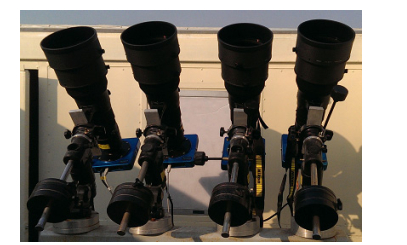
 下载:
下载:

